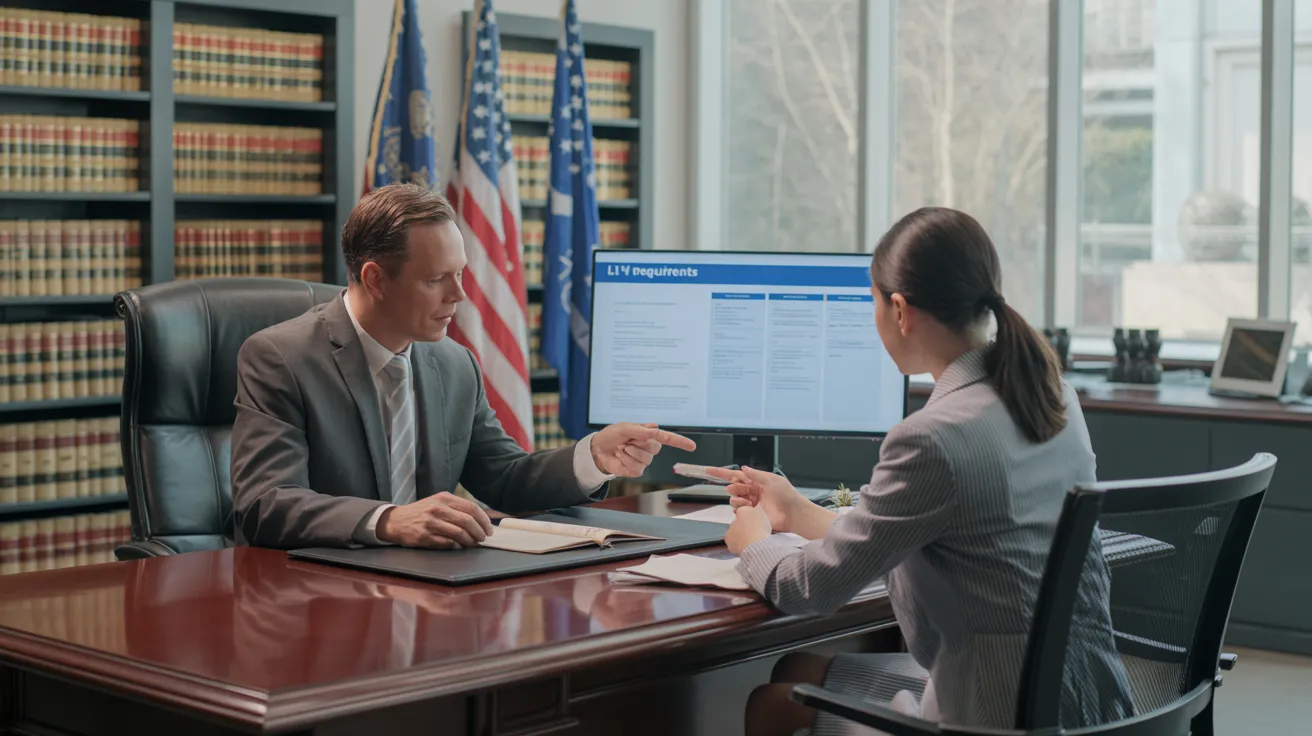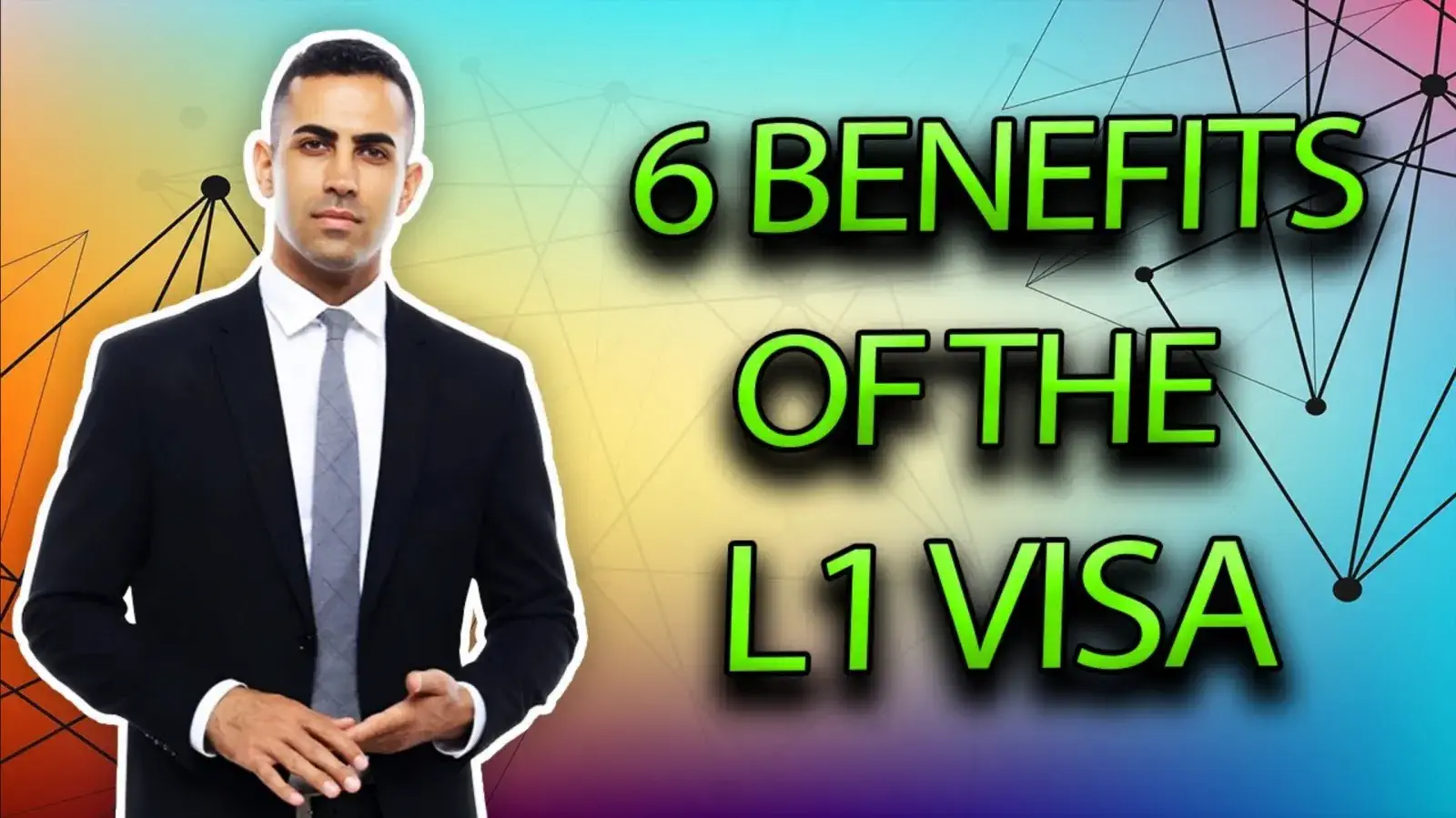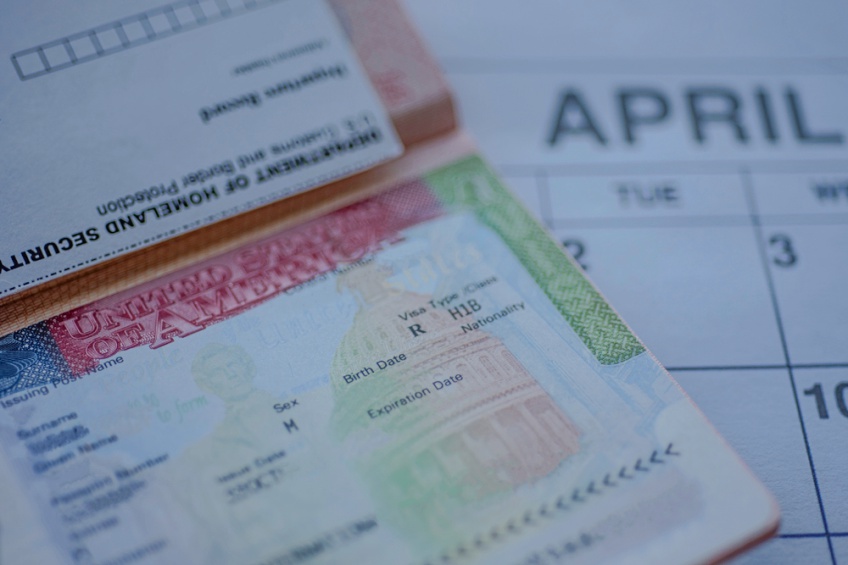Unlocking Opportunities: A Comprehensive Guide to the L1 Visa Process
The L1 visa process provides an essential pathway for multinational companies seeking to transfer crucial workers across borders. Comprehending the subtleties of qualification requirements, the distinctions between L-1A and L-1B visas, and the complexities of the application process can significantly affect a candidate's success. Nonetheless, maneuvering this facility landscape is not without its challenges, and careful focus to documentation and employer sponsorship is crucial. As we explore the vital elements of this process, the approaches for overcoming possible obstacles will become evident, disclosing exactly how notified prep work can open up a globe of chances.
Recognizing the L1 Visa
Recognizing the L1 visa entails acknowledging its significance as an essential tool for international business looking for to transfer competent staff members in between worldwide workplaces. This non-immigrant visa classification promotes the motion of execs, supervisors, and specialized understanding workers to the United States, thus allowing organizations to keep functional connection and harness global skill efficiently. The L1 visa is divided into 2 key categories: L-1A for managers and execs, and L-1B for workers possessing specialized knowledge.The L1 visa offers a vital function in enhancing a business's affordable side in the international industry - L1 Visa. By allowing companies to move their essential employees, services can guarantee that important jobs are taken care of by certified people who are already knowledgeable about the firm's culture and functional procedures. This interior transfer system not just promotes knowledge sharing yet additionally promotes technology and cooperation across borders.Moreover, the L1 visa is frequently favored for its relatively simple application process compared to other visa categories, as it enables dual intent, permitting holders to seek irreversible residency while on a momentary job visa. This function makes the L1 visa especially appealing for both employers and workers, as it simplifies the pathway for proficient specialists to establish lasting residency in the United States
Eligibility Requirements
Eligibility for the L1 visa rests on numerous crucial requirements that assure both the worker and the employer fulfill details qualifications. This non-immigrant visa is developed for multinational firms to move staff members from consular services to U.S. counterparts.Firstly, the company needs to be a qualifying company, which includes a moms and dad business, branch, affiliate, or subsidiary of a united state business. The company must have been doing company for at the very least one year both in the U.S. and abroad. This guarantees that the firm has enough functional security and a legit presence.Secondly, the employee needs to hold a supervisory, exec, or specialized knowledge position. For L1A visas, the applicant needs to show managerial or executive certifications, while L1B visas concentrate on specialized expertise pertaining to the company's items, solutions, or procedures. Additionally, the employee needs to have worked for the international entity for at least one continuous year within the last 3 years prior to their application.Lastly, the worker's duty in the united state should align with their previous placement, making sure that their abilities and proficiency are leveraged for the company's benefit.
Kinds Of L1 Visas
The L1 visa category makes up two primary kinds designed to facilitate the transfer of employees within multinational companies: the L1A visa for managers and executives, and the L1B visa for staff members with specialized knowledge. Each type offers distinct objectives and has specific eligibility criteria.The L1A visa is customized for individuals who hold supervisory or executive positions within a firm. This visa allows high-level employees to move to a united state branch, subsidiary, or associate of the exact same organization. Applicants for the L1A visa have to demonstrate that they have been utilized in a managerial or executive capacity for at the very least one constant year within the past three years before their application. In addition, this visa uses a much longer period of remain, at first granted for 3 years, with the possibility of extensions for up to 7 years.In contrast, the L1B visa is intended for experts with specialized expertise pertaining to the business's items, services, or processes. To certify, applicants need to prove that their know-how is crucial to the organization which they have actually benefited at least one continuous year within the last 3 years in a duty that required this specialized expertise. The L1B visa is initially granted for three years, with extensions offered for up to 5 years.Both visa types are essential for firms looking for to boost their international operations by leveraging knowledgeable workers, consequently promoting innovation and efficiency within the united state market.
Application Process
Steering with the L1 copyright process involves numerous vital actions that need to be thoroughly followed to assure an effective end result. The procedure begins with the united state company, that need to initially establish qualification by demonstrating a qualifying relationship with the foreign entity and verifying that the worker fulfills the specific requirements for the L1 visa classification being sought.Once eligibility is confirmed, the company starts the procedure by filing Kind I-129, the Application for a Nonimmigrant Worker, with the U.S. Citizenship and Migration Services (USCIS) This type must be come with by a detailed description of the task obligations to be carried out, the organizational structure of both the united state and international entities, and the worker's qualifications. It's essential to confirm that all info is exact and total, as omissions or inaccuracies can cause delays or denials.Upon approval of the I-129 request, the following action includes the worker getting the L1 visa at an U.S. consular office or consulate in their home country. This phase requires the conclusion of Kind DS-160, the Online Nonimmigrant copyright, and arranging a meeting. Throughout the interview, the candidate should provide proof supporting their qualifications and the company's petition.After the visa is granted, the staff member can get in the USA to function in the assigned function. Overall, cautious prep work and adherence per step of the application process are important for a successful L1 visa end result.
Required Documentation

Essential Kinds Needed
Maneuvering the L1 Visa process needs mindful attention to the important forms and documentation necessary for an effective application. The main kind needed is the Form I-129, Request for a Nonimmigrant Worker, which should be completed and submitted by the U.S. company. This form lays out the details of the employment deal and the credentials of the worker looking for the L1 Visa.Alongside Kind I-129, the candidate will need to complete Form I-539 if coming with household members are likewise making an application for visas. In addition, the employer must offer evidence of the qualifying connection between the U.S. entity and the international entity, often demanding the entry of corporate records such as write-ups of incorporation or economic statements.Moreover, it is essential to include the L Classification Supplement to Type I-129, which specifies the type of L Visa being asked for-- either L-1A for supervisors and execs or L-1B for workers with specialized knowledge. Candidates need to assure that all forms are signed and dated properly, as insufficient entries can lead to hold-ups or rejections. Correctly constructing these vital kinds lays the foundation for a smoother L1 copyright process.

Sustaining Evidence Needs
Sustaining paperwork is necessary for an effective L1 copyright, as it validates the cases made in the petition. Applicants must give a variety of documents to show qualification for the visa, which is categorized into two primary kinds: proof of the qualifying relationship between the united state and international entities and proof of the candidate's qualifications.To develop the connection, candidates need to submit paperwork such as business business graphes, monetary declarations, and evidence of ownership. These documents validate that the foreign business has a certifying relationship with the united state employer, whether as a moms and dad company, subsidiary, branch, or affiliate.For the applicant's qualifications, necessary papers include a comprehensive work letter from the international company, describing the applicant's work title, duties, and duration of employment. In addition, instructional credentials, such as degrees and diplomas, must be provided to prove the candidate's experience in the appropriate area.
Company Sponsorship Papers

Typical Challenges
Navigating the L1 visa process presents several common difficulties that candidates should recognize. Trick problems frequently consist of strict documents needs, prospective delays in handling times, and the necessity for stringent lawful conformity. Comprehending these challenges can help applicants better prepare and reduce risks during their copyright trip.
Documents Requirements
The L1 copyright process commonly presents substantial challenges connected to documents needs. Applicants should supply comprehensive documents to develop eligibility, which can lead to confusion and potential hold-ups. Key papers include proof of a certifying connection between the U.S. and international company, proof of the candidate's work history, and thorough details about the job function in the U.S.One typical obstacle is collecting enough evidence to show the nature of the qualifying connection. Companies usually have a hard time to existing clear organizational charts or financial declarations that illustrate the link in between the entities. On top of that, guaranteeing that letters of assistance from employers properly show the candidate's work tasks and certifications is important, learn more as unclear summaries can lead to denials.Another problem emerges from the requirement for thorough work summaries that straighten with the L1 visa classifications. Applicants must verbalize not just their present duty but additionally their managerial or customized knowledge responsibilities plainly. This requires a thorough understanding of both the candidate's placement and the regulatory language made use of in L1 applications.
Handling Time Hold-ups
Experiencing hold-ups in handling times is an usual obstacle faced by L1 visa applicants, commonly leading to aggravation and uncertainty. Numerous factors add to these delays, consisting of high application volumes, boosted analysis of applications, and management backlogs within the U.S. Citizenship and Migration Services (USCIS) Candidates may find that processing times can vary substantially depending on the service center managing their application, as each facility has its own workload and efficiency levels. In addition, the complexity of the applicant's case, such as the requirement for comprehensive paperwork or explanation, can better prolong wait times.In some instances, concerns associated with the applicant's current migration status or previous visa history might additionally bring about additional delays, as USCIS may require further review or details. It is essential for prospects to continue to be positive during this period, preserving open interaction with their companies and lawful agents to resolve any type of prospective problems promptly.Understanding these handling time obstacles can aid L1 visa applicants prepare for feasible delays and reduce the effect on their shift and occupation strategies. Perseverance and diligence are necessary merits in maneuvering this elaborate process.
Legal Conformity Issues
Numerous L1 visa applicants experience legal conformity issues that can complicate their trip toward obtaining the visa. Recognizing and adhering to the specific regulations established by the U.S. Citizenship and Immigration Provider (USCIS) is vital. Common difficulties include demonstrating the certifying connection between the foreign and united state employers, as well as verifying that the applicant has the requisite specific expertise or managerial capacity.Additionally, applicants should provide extensive documents describing their task responsibilities, company framework, and monetary stability of the united state entity. Insufficient or unreliable documentation can result in delays and even rejections. Companies should also assure that they adhere to labor legislations, including wage and functioning condition standards, which can impact visa eligibility.Another common problem entails maintaining compliance with the regards to the visa when provided. Modifications in work standing, work obligations, or firm structure can necessitate amendments to the visa, which otherwise attended to immediately can result in lawful problems. Because of this, remaining informed concerning compliance requirements and seeking legal advise when needed is necessary to navigate the complexities of the L1 visa process successfully.
Tips for Success
Success in the L1 copyright procedure typically depends upon thorough preparation and attention to detail. To boost your possibilities of approval, start by completely recognizing the qualification needs for both the L1A and L1B visa groups. Assess whether your placement at the firm qualifies as managerial, executive, or specialized understanding, as this categorization significantly influences your application.Next, collect substantial documentation that validates your claims. This includes business charts, detailed task descriptions, and evidence of the firm's operational framework. Clear and succinct proof of the certifying connection between the U.S. entity and the international entity is crucial. Confirm that all records are arranged logically and offered in a specialist way, as this mirrors your dedication and seriousness about the application.Engage the services of a skilled immigration attorney that focuses on L1 visas. Their know-how can verify important, leading you via complex laws and assuring that all paperwork abides by present legislations. In addition, plan for the meeting by exercising response to common questions and being prepared to discuss your function and payments to the company in depth.
Frequently Asked Concerns
Can Household Members Come With the L1 Visa Holder?
Yes, relative of L1 visa holders, consisting of spouses and unmarried youngsters under 21, can accompany the main visa holder. They may also look for L2 visas, which enable them to stay in the USA.
How Lengthy Can I Remain On an L1 Visa?
The L1 visa enables first keeps of approximately 3 years, with the opportunity of expansion. L1A visa owners might stay for a maximum of seven years, while L1B visa owners can continue to be for five years.
Can L1 Visa Holders Use for an Eco-friendly Card?
Yes, L1 visa owners can make an application for a permit. L1 Visa Requirements. They might seek long-term residency via employment-based classifications, generally needing sponsorship from their company, supplied they meet the required qualifications and paperwork demands
What Happens if My L1 copyright Is Denied?
If your L1 copyright is refuted, you may obtain a notice outlining the factors for denial. You can look for to appeal the choice, reapply, or explore alternative visa options based upon your situations.
Exist Any Type Of Traveling Restrictions With an L1 Visa?
An L1 visa usually permits international traveling; however, re-entry to the U. L1 Visa.S. rests upon preserving valid standing. Vacationers should ensure compliance with visa problems to avoid issues upon return
Final thought
